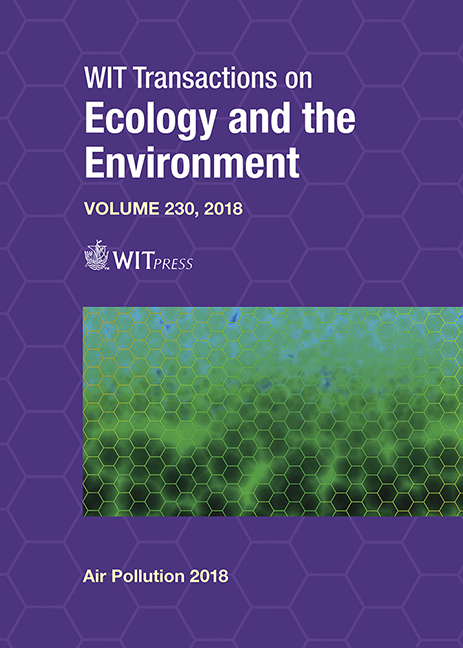SPATIAL HIGH-RESOLUTION MAPPING OF NATIONAL EMISSIONS
Price
Free (open access)
Transaction
Volume
230
Pages
10
Page Range
399 - 408
Published
2018
Paper DOI
10.2495/AIR180371
Copyright
WIT Press
Author(s)
MARLENE S. PLEJDRUP, OLE-KENNETH NIELSEN, HENRIK G. BRUUN
Abstract
Spatial distribution of emissions is a key element in assessing human exposure to air pollution through use of dispersion modelling. The quality of the spatial emission mapping is crucial for the quality, applicability and reliability of modelled air pollution levels, estimated human exposure, incurred health effects and related costs; all very important information for policy makers in decisions of implementation of environmental policies and measures. The purpose of the MapEIre project, funded by Ireland’s Environmental Protection Agency, is to develop a high-resolution spatial mapping of the Irish emission inventory. The work is state-of-the-art and combines a large amount of statistical data with detailed spatial information to allow for a complete spatial emission mapping on a 1 kilometre by 1-kilometre resolution. The spatial model is developed as an integrated database system focusing on user-friendliness and performance optimisation. The spatial model for Ireland integrates official statistics, such as the Irish emission inventory, and censuses of population, housing and agriculture, with a large number of spatial datasets as diverse as heat demand, building use, road network and land cover maps, selected through a comprehensive assessment of available spatial data. The model covers 32 pollutants and 177 sectors and includes the entire Irish exclusive economic zone. The methodology developed and the lessons learned will be of great benefit to other countries, which are embarking to develop high-resolution spatial emission distributions. The detailed spatial distribution of emissions can be used by policy makers on both national and local level in decision making and prioritising of environmental measures. Further, it allows for a more detailed regulation, implementing measures targeting areas where emissions are highest, allowing for more cost-effective initiatives on local, regional and national scale.
Keywords
spatial emissions, emission mapping, emission inventory, GeoKey, air pollution, gridding





